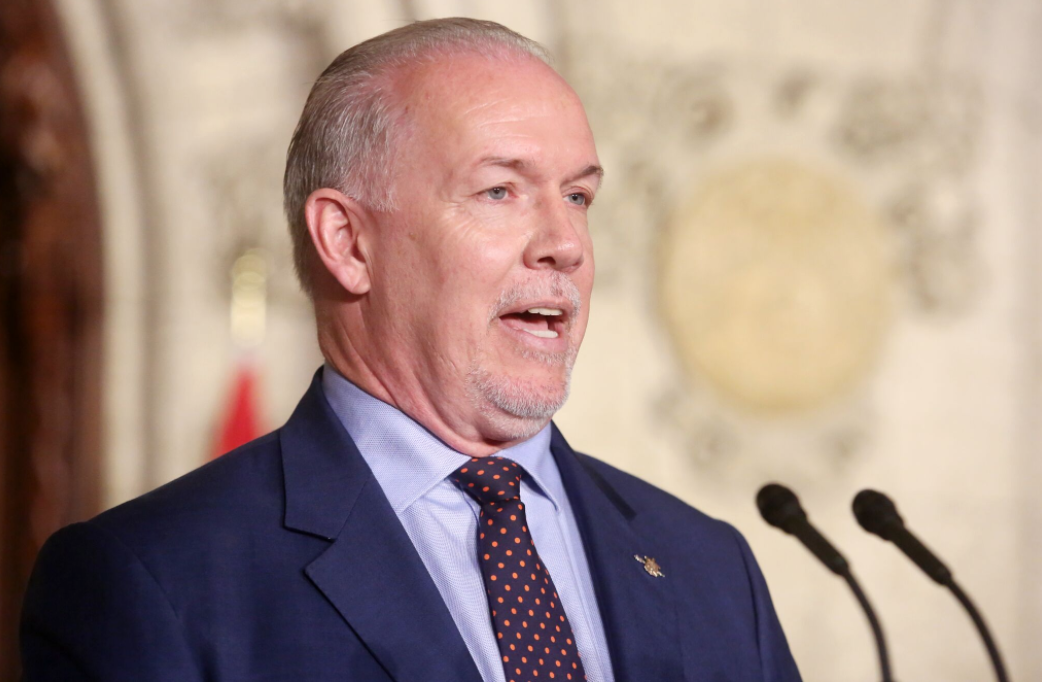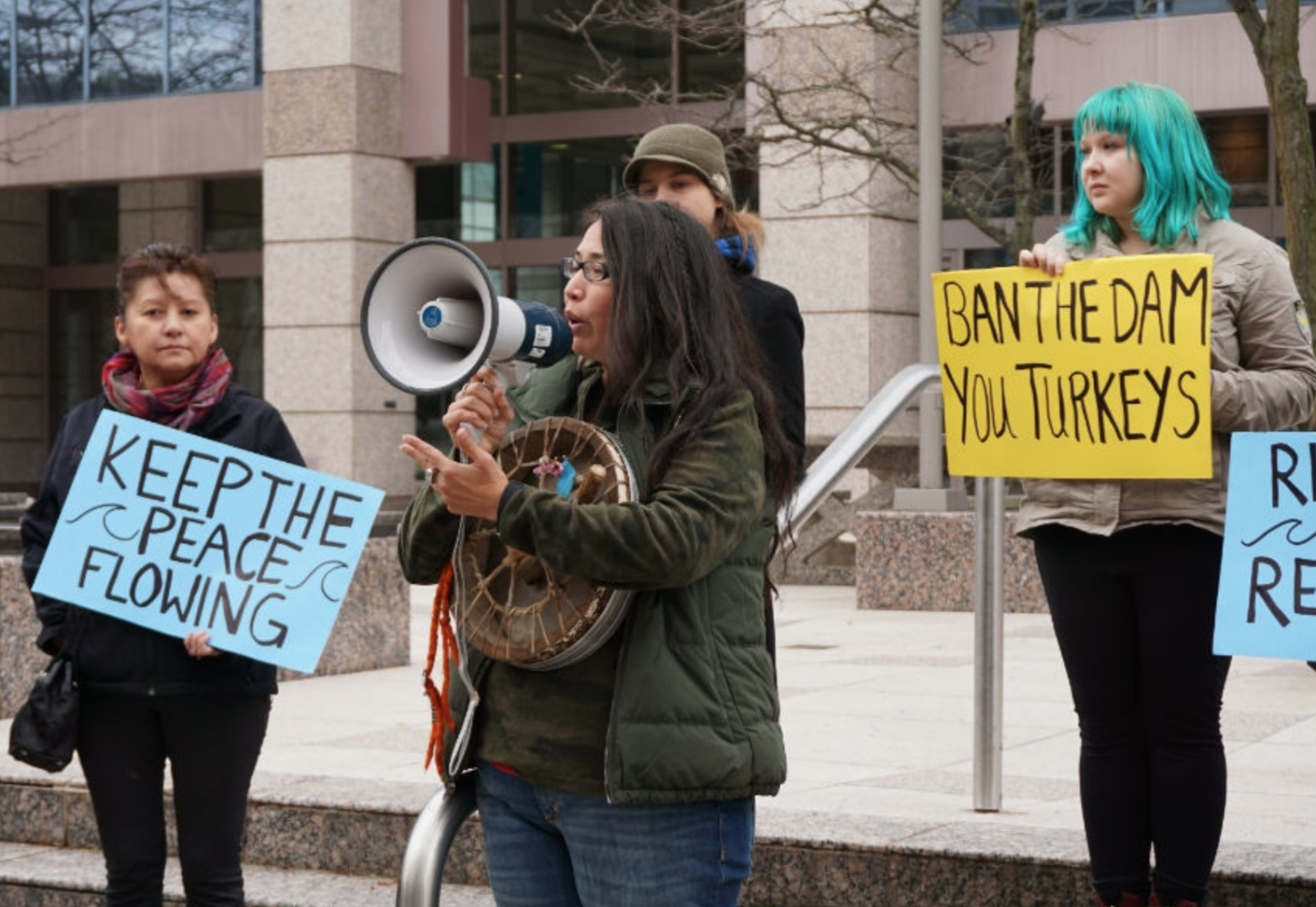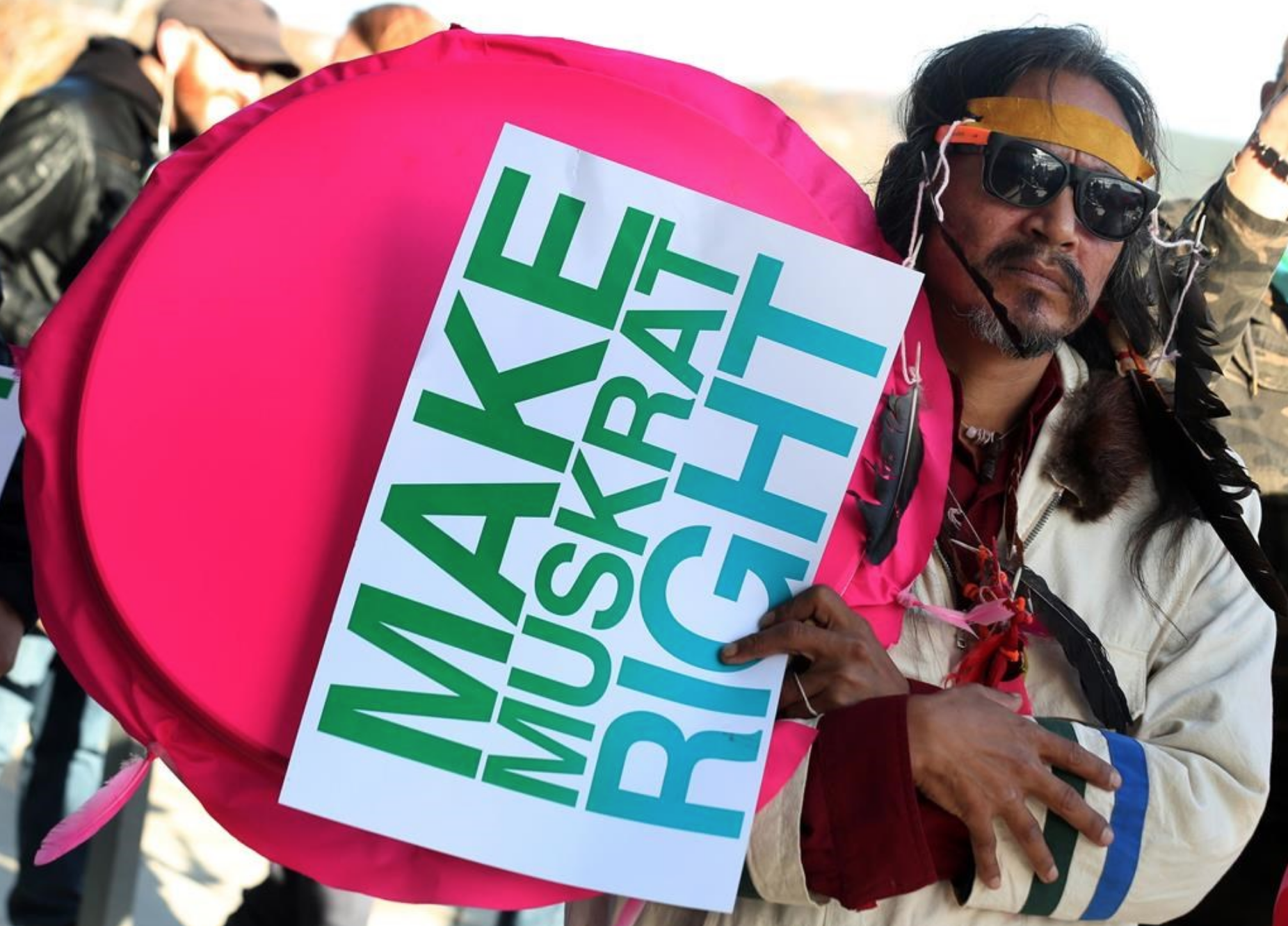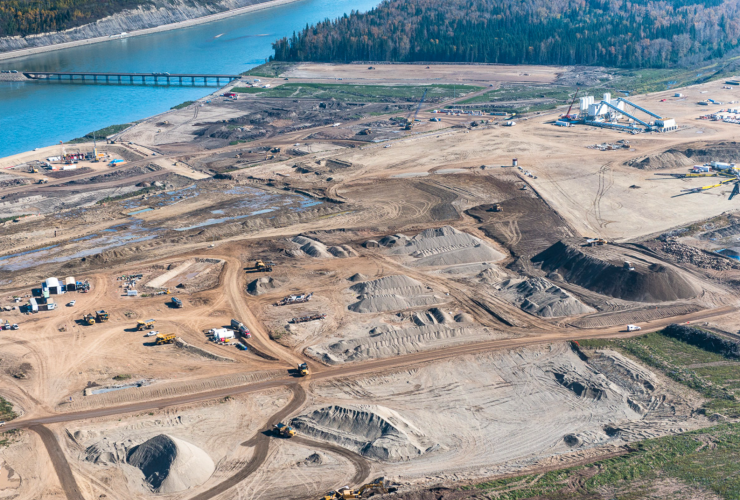Brazil has flooded large swaths of the Amazon for hydro dams, despite opposition from Indigenous peoples, environmentalists and others.
The country gets 70 per cent of its electricity from hydropower. Brazil’s government had plans to expand development, opening half the Amazon basin to hydro. But a surprising announcement could halt that.
In an interview with O Globo, Mines and Energy executive secretary Paulo Pedrosa said the government is reconsidering hydro construction in the face of societal pressure, environmental damage and increasingly competitive renewable energy options.
We can see parallels in Canada, where large hydro projects have been pushed through despite similar opposition and concerns.
With an October election in Brazil, things could change, but we hope whatever government holds power will recognize there are better options than large-scale hydro. We also hope the B.C. government will reconsider its decision to proceed with Site C.

Hydropower isn't actually that green
Hydropower isn’t as “green” as many people once thought, and climate change creates new challenges. Decades of research show greenhouse gas emissions from large hydroelectric projects can be substantial, especially if carbon dioxide emitted during steel and concrete manufacturing and construction activities is accounted for.
Decomposing materials in reservoirs emit methane, a far more potent greenhouse gas than CO2 over the short term. A 2016 study confirmed findings of studies from Canada and elsewhere going back decades that methane emissions from hydro dams are far greater than previously estimated. Minimum emissions are similar to those from generating electricity using natural gas. And receding glaciers and changes in precipitation patterns from global warming put hydro dams at risk because of lower water levels.
Large-scale hydro also causes enormous environmental and social damage, including farmland and habitat destruction, changes to waterways and water tables, and displacement of Indigenous Peoples. Where large areas of land are flooded, mercury in fish increases several-fold, making this traditional source of protein risky to eat.
In Canada, large-scale projects such as Site C in B.C. and Muskrat Falls in Labrador run counter to our commitments to combat climate change and respect Indigenous Peoples’ rights. Both projects are over budget and years behind schedule.
Canada’s auditor general recently found the current mid-century climate strategy won’t meet our international commitment to reduce greenhouse gas emissions by 80 per cent between 2005 and 2050.

Canada should rethink its strategy
These facts and rapid improvements in electricity generation suggest Canada should rethink its climate strategy. Renewable energy options can generate needed electricity for lower cost and in a timelier manner, as a recent Site C analysis shows. Conservation measures can reduce energy needs.
Solar and wind power have increased in efficiency and decreased in cost at several times the rates estimated a decade ago. The lowest electricity cost in Canada is from an Alberta wind farm, which will supply 600 MW of electricity at an average cost of 3.7 cents per kWh, at least three times lower than Site C power.
Fears that solar and wind are unpredictable have been nullified by recent developments in mega-storage batteries. In November, Tesla installed a 100-MW battery in Australia’s outback to handle power outages and daily demand fluctuations. In contrast to recent hydroelectric projects, it was delivered ahead of schedule and on budget.
Despite Natural Resources Canada’s identification of enormous geothermal resources in Canada, this power source has scarcely been considered, except for shallow heat pumps for individual dwellings and buildings. Many oil and gas wells in Western Canada reach hot water, which might be used either directly or to map underground isotherms that allow efficient drilling for geothermal power. Expertise for drilling geothermal wells already exists in the oilpatch, facilitating the transfer of jobs from old fossil fuel technology to less carbon-intensive industries.
Provincial and federal government ministers have touted continued development of oilsands, LNG-fired electricity and pipelines as interim activities needed to make the transition to a low-carbon economy. As the auditor-general’s report demonstrates, these activities will prevent Canada from fulfilling its international obligations to reduce emissions. We have neither need nor time for transitional industries.
Brazil’s announcement sets an example. Canada must also meet its commitments to reduce greenhouse gases and improve relations with Indigenous Peoples. To do so requires avoiding the massive hydro development that Canada’s mid-century climate plan would require and instead rapidly transition to modern energy sources.
— written with contributions from David Suzuki Foundation Board member David Schindler, an award-winning scientist and professor emeritus at the University of Alberta.
Unlike with the SFU "suicide
Unlike with the SFU "suicide bomber" Kinder Morgan, I've always had some uncertain thoughts about Site C in both ways. I've leaned opposed to the project, but not quite enough that I'd take action myself. I've been thinking that with the BC Liberals gone, the province might grow even faster and the energy might end up being used after all (albeit somewhat expensive energy). I've also wondered about new land down below if the dam is actually completed, again skeptical if it's enough to make up for the land up above. Mostly just my thoughts, though.
Now, just another odd thing I wonder...being that it's David Suzuki, how optimistic is he about political activism around the city of Nelson? That area depends on the hold-back of water that would have flooded Washington and Oregon (in this case though, I think the primary rationale is to prevent flooding below). So what happens if water levels go down after so many years, all the way to the dam east of Portland, and Nelson is no longer the lakeside community it used to be?
Adam,
Adam,
I'm not sure where you live, but if it's in the lower mainland (like me), it's dangerously easy to be ignorant about the goings-on in an area as remote as the Peace River. On the other hand, we here have the luxury of being in the midst of all sorts of information sources, including people from the Peace River area, who have given us presentations attesting to the unique characteristice of the agricultural spaces there, etc., that will be lost.
Perhaps some of your questions could have been answered in information provided by attendees at the pipeline hearings that took place along the proposed Kinder Morgan twinning route 1 1/2 years ago. Having attended 6 out of the 7 that took place in Vancouver, Burnaby and North Vancouver, I can honestly say that anything that any proponent said in support of such a fiasco had to do with economics, and NOTHING to do with living entities!
I think that, these days, all of us must do our civic duty and become as informed as we can about what is going on in our country - locally and nationally - and get involved! There's no more room nor time left to sit on the fence!!
Thank you!
Originally, I was in the West
Originally, I was in the West Kootenay region, which holds the upper half of the U.S. Northwest reservoir system, done in response to flooding in Washington and Oregon. It's not the Peace River, but I do know what a reservoir system is like. After it's built, some land can be lost above, while new land can be gained below (or alternatively, coastal communities don't get flooded). The effect below is what leaves me on the fence about Site C.
The Kinder Morgan pipeline on the other hand, I'd have rejected the idea without hesitation.
Adam, Thanks for your reply
Adam, Thanks for your reply. And mega-thanks to National Observer for providing this platform! It sure is worth supporting!
I hear you! So I just hope that perhaps one teensy idea just might help you down off the fence... I believe the river management system you're referring to is the Columbia River, which was definitively mentioned in at least the 2 public forums about Site C that I attended. Flood control is but one purpose for building a dam. However, it isn't even anywhere near the radar for Site C. The sole purpose of it is to provide power for extraction industries - specifically LNG, which by now is being hugely debunked as just another political toy. About the issue of land use above and below a dam, my question is: why would one sacrifice what has already proven to work so famously, for a questionable situation? The agriculture taking place in the Peace valley supports food security so well, and the use of the river as it exists now has supported - and continues to do so - Indigenous and other communities for time immemorial.
I hope this is helpful, Adam, and I hope you remain so passionately engaged. Who knows - such dialogue just might invite others to fire up and get involved!
Perhaps "Beyond budget" would
Perhaps "Beyond budget" would be more accurate than "Behind budget"?






Comments